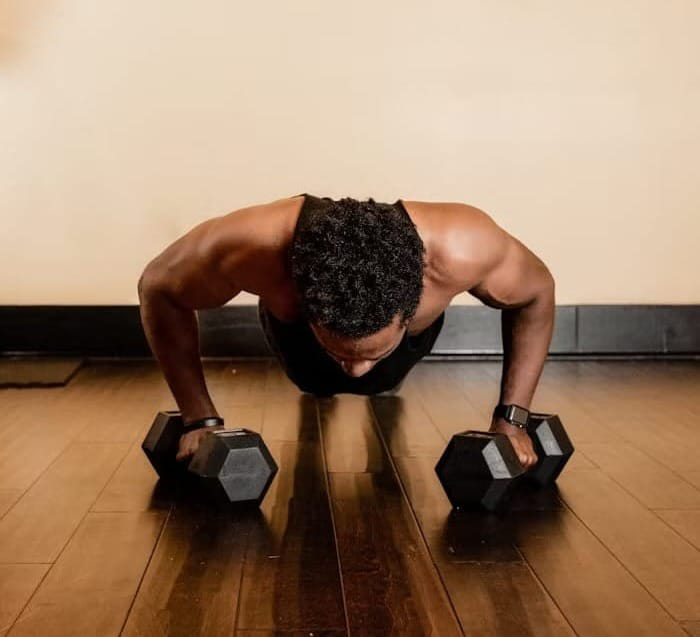Do exercises have a "gender?"

(photo credit: Meagan Stone)
It’s been almost two decades, but I still have a vivid recollection of one of the most perplexing questions of my career. A potential client approached me for some help with core training. I asked her if she could do a push-up. She looked at me quizzically and responded “Do you mean girl push-ups or guy push-ups?”
I was flummoxed. I didn’t know exercises had a gender. But my confusion was understandable: exercises, do not, in fact, have a gender. They don’t exist to the detriment (or benefit) of either men or women.
It's certainly true that women pre and post-pregnancy have certain limitations on what movements they can perform. (This is especially true for women who suffer from diastasis recti, where the abdomen muscles are torn during child birth.) But assuming an inherent lack of strength in women is no different than assuming a particular movement is unsuitable for men because it entails a high level of emotional availability.
What the potential client was referring to is more commonly called a “modified” push-up, in which people rest on their knees and use their arms to raise themselves up and down. A modified push-up has as much in common with an actual push-up as a leisurely walk in the park does with an all-out sprint. Which is to say that there’s no correlation at all.
Contrary to popular opinion, push-ups are a full-body exercise. In a correct push-up, your lower body (glutes, hamstrings, quads etc) are as actively engaged as your upper body. They help stabilize the body during the movement. As a cyclist, that's one reason I'm very adept at push-ups and less so at pull-ups: I can't harness the strength of my lower body nearly as much with pull-ups.
The main problem with a “modified” push-up is that it negates the involvement of the lower body, and focuses solely on the appendages. This method is counterproductive as it does nothing to strengthen the core stabilizer muscles (the glutes and the ab complex in particular) that are so crucial in performing a push-up.
Perhaps the most important question is “Should you be able to do an actual push-up?” The answer is a resounding “yes.” There are a myriad of reasons for this, including:
1) Push-ups are a great form or resistance training that mitigates bone density loss due to aging.
2) Push-ups are cardio intensive and burn calories. (Resisting gravity gets the heart rate up)
3) Push-ups strengthen the core, which in turn, helps reduce the chance of injury, particularly to the lower back complex.
4) Perhaps most importantly, when you fall, you need to able to pick your butt off the ground with the least amount of difficulty. This becomes even more crucial as you age.
Many people can’t perform a push-up. If that describes you, there’s no reason to fret. You’re not an anomaly. Many of my clients have struggled with push-ups initially. But the solution is not to do a modified push-up. It’s to strengthen your core.
A plank is a great foundational exercise, and a good way to start. Start with your elbows on the ground (shoulder length apart) and knees off the ground. Feet should be roughly shoulder length apart. Tighten your glutes and abs. Try for ten seconds initially. Then increase it for another ten seconds. One minute is fantastic. Two minutes is great. Anything beyond that is exceptional.
Alternatively, you could try a push-up on an elevated surface, such as a counter. Make sure to keep your head straight and tighten your glutes and abs (this is an oft repeated mantra of mine). Aim for five and then gradually increase in increments of five. This is a great way to develop core strength and train for push-ups on the ground.
Joshua Brandt is an Oakland based personal trainer.
He can be reached at joshua@joshuabrandtpt.com or (415) 412-7339.
Initial consultation and session is free.
Member discussion